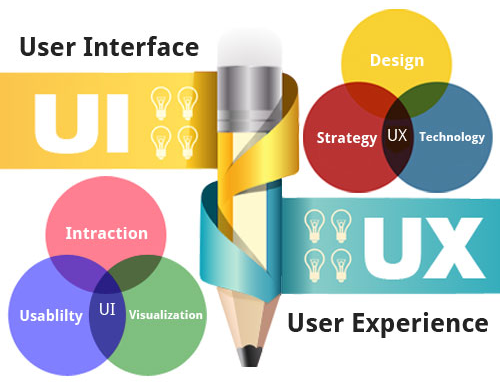Did you know that your website’s UX and UI affect your search engine rankings? By improving both the usability (UI) and user experience (UX) your site offers visitors, you can improve your search engines ranking.
UX and UI goes a long way in forming an outlook towards a website. A seamless experience is where it all begins…the decision to come back or not. The verdict that also influences the rankings on a search results page. Now, speaking of rankings, SEO is bound to creep in. It stands as the determiner that can actually mountain up your website or make it slope down. It, undoubtedly, makes you the best from the rest. But if you think SEO is all about forming positions, then you are mistaken. There is much more to it.
Professionals are often caught in the trap of keywords thinking that this is what it takes to win the consumers. Actually, this is when they miss the mark. SEO is how well you connect with the people and understand your users. The concept has reformed a lot over the last few years. The techniques have been relegated and the approach now also includes tweaking metatags and strong voicing of the brand identity in the digital space. These form the base for on-page optimization which further paves the way for user experience.
In this article, we’ll take a closer look at each of these factors and how they’re relate to SEO. We’ll also provide concrete tips and suggestions you can implement right away to improve both the usability and user experience you offer your customers and potential customers.
What is usability (UI)?
The term “usability” is used to describe how user friendly a website’s user interface (UI) is and how easy it is to use. Usability considers how easily site visitors can perform basic tasks without confusion or abandonment. Does the design provide all necessary features for example? Is it easy to navigate? Can first-time users find the information they need with the minimum of effort? These questions must be asked of your site when assessing its usability.
An in-depth measurement of site usability would also factor in the efficiency of the design. This can be evaluated by determining how quickly users can perform tasks after they familiarize themselves with the layout.
What is user experience (UX)?
Also known as UX, the user experience encompasses the visitor’s perception and response resulting from the use or anticipated use of services, products and systems. The term user experience was coined by the cognitive science researcher Dr. Donald Norman. He was the first to identify the importance of creating a user-centered design.
At its core, UX is how a user feels throughout the interaction with the website, web app or software. Factors including design, usability, accessibility, system performance and marketing will all play their part. Usability and user experience are closely related, but they are not the same.
Hmm, so what’s the difference between UX and UI?
The first major difference between usability and user experience is in their definition. Usability involves efficiency, effectiveness and satisfaction where users are able to perform and achieve certain tasks easily. In contrast, user experience has a broader definition which covers every aspect of a user’s interaction with the web site or system.
Simply put, the main goal of usability is to make the site simple to navigate. User experience aims to make the user happy enough to log a conversion. Usability concerns itself with how easily a user can interact with the website. User experience is related to the way users perceive that interaction.
Many people mistakenly believe that just because something is easy to use, it automatically creates a good user experience. The truth is that site usability is only one of many factors that influence the overall user experience.
How UX and UI affect Search Engines ranking?
Both usability and user experience have an indirect, yet immensely beneficial, impact on the external popularity of a website. Because usability and user experience can help to improve conversions, traffics and recommendations, they can be said to have a direct correlation with search engine optimization.
If your website is difficult to navigate, it’s only natural that you’ll struggle to engage visitors. Lower engagement rates not only increase the exit rates, but they also bring in fewer return visitors. The only way to increase user engagement and minimize your bounce rate is by improving your usability.
If searchers cannot find what they’re looking for, it’s likely that they’ll dwell for just a few seconds before leaving and going back to the search result page to find a site that can help. High exit rates reduce the dwell time.
How to fix? For starters, inquire about the pain points of your friends, employees and customers and work them out. Further, use websites like User Testing to learn the responses from the visitors and their experience with your site.
Rule with an awesome website design
Let’s just say, a great website design is the stepping stone for an awesome UX. That is the reason ecommerce giants like Amazon and Ebay are constantly redesigning their sites and cashing on their users. They look into the needs of their users and leave no stone un-turned to satisfy their demands. To carve a niche as a brand, you ought to be different and strike a chord with the audience. Having a live and online website is not just about it. You must stand out. A site should be all the more interactive, intuitive and inviting so that it can pull large numbers.

